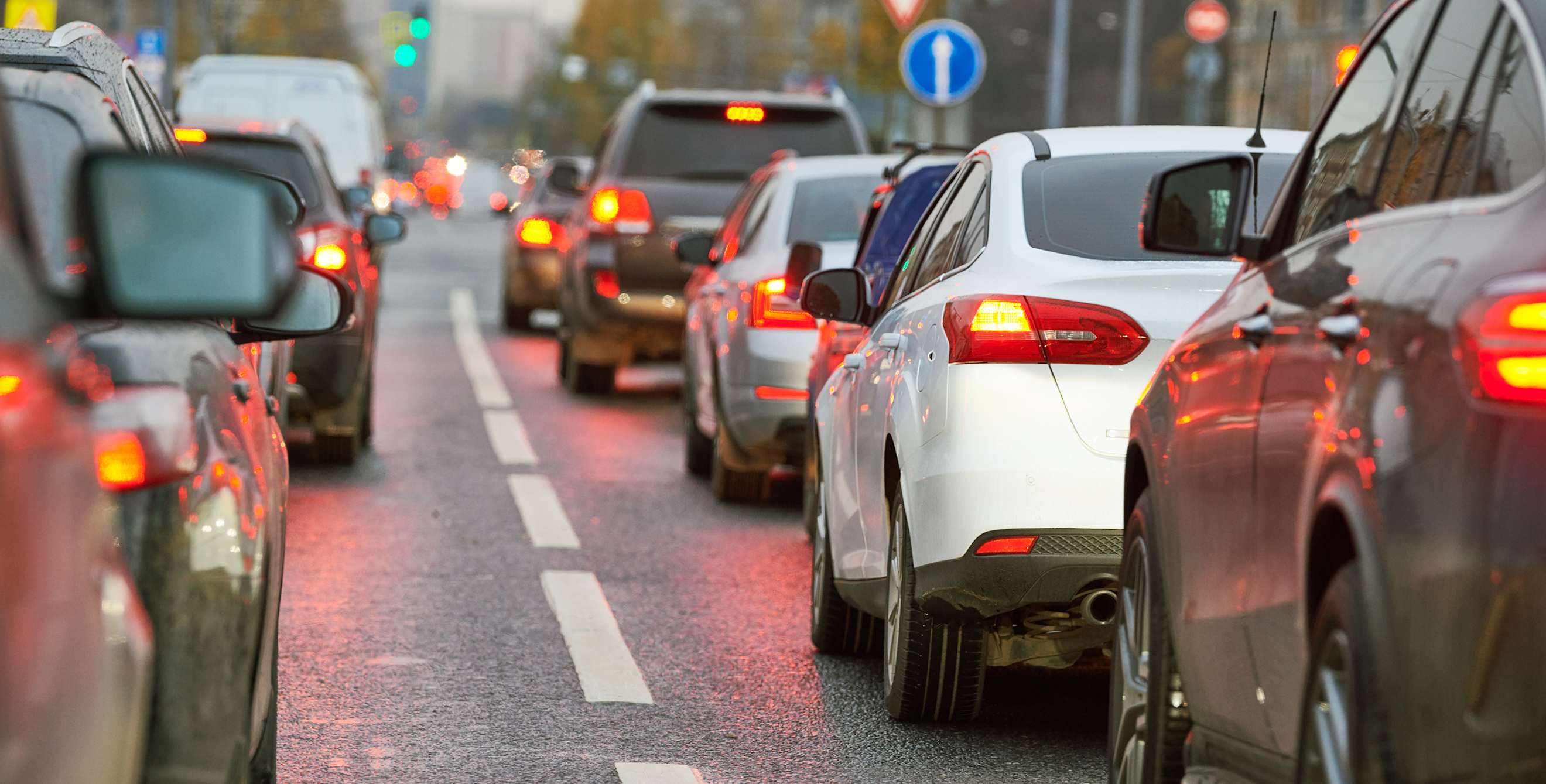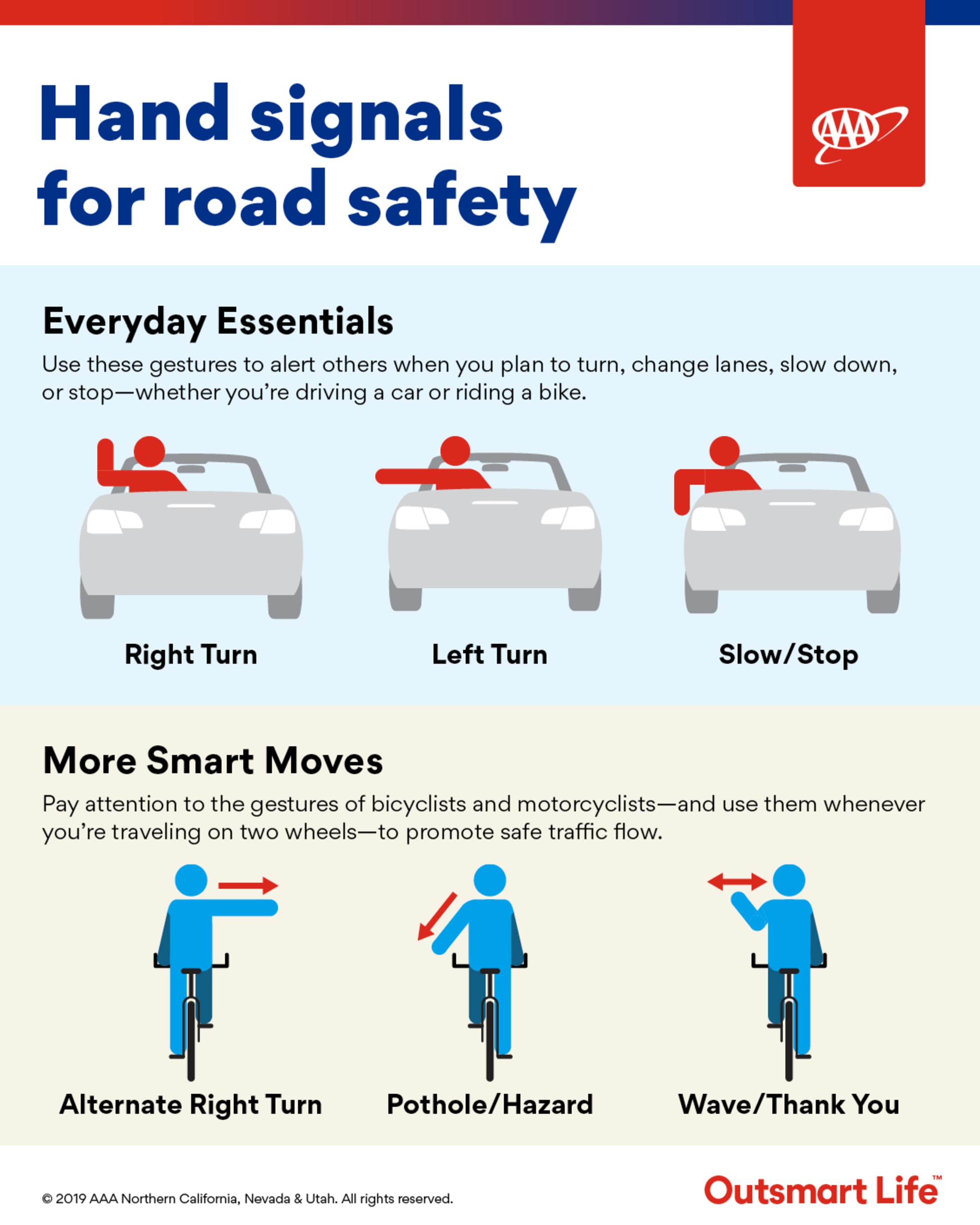
When to Use Hand and Turn Signals
Road safety gestures keep drivers, motorcyclists, and cyclists safe—and ticket-free.

Are you breaking the law without even knowing it? U.S. Department of Transportation statistics show that one in four drivers fails to signal when turning, and twice as many neglect to do so when changing lanes. Yet most states in the West require signaling—with either a blinker or a hand—at least some of the time. Even when it's not illegal, failing to signal can compromise safety.
Electric turn signals or hand signals let everyone on the road, including cyclists and pedestrians, know your intentions. Nearly 40 percent of a vehicle’s outer perimeter is hidden by blind spots, which means drivers may not always be able to see other traffic in the vicinity. Signaling is a vital way to help prevent crashes, says William Van Tassel, manager of AAA Driver Training Programs.
“Traffic will flow much smoother when there is communication among road users, and the risk of a collision will be much lower if there’s communication as well,” he says.
Here’s how and when to use blinkers and hand signals when driving and biking.
Blinkers and Hand Signals
Drivers are legally required to signal at least 100 feet before turning, using a blinker or a hand signal, in every state in the West. Western states also mandate using a turn signal before changing lanes. Some states, such as California and Idaho, require drivers to signal five seconds before switching lanes to give anyone in traffic around you time to react.
Of course, when you’re driving a car, you’re most likely to use the electric turn signals to communicate with others on the road. But it’s important to understand hand signals too. Anyone operating a vehicle with a broken, missing, or obscured turn signal is required by law to use hand signals when changing lanes or turning. You also should understand what other drivers and cyclists are signaling to you.

The three essential hand signals are:
- Right turn: Bend your left arm 90 degrees at the elbow, with your fingers pointing up and palm facing forward. (Alternately, cyclists can point their right arm straight out to indicate an upcoming right turn.)
- Left turn: Extend your left arm straight out, parallel to the ground, palm facing forward.
- Slow/stop: Bend your left arm 90 degrees at the elbow, with your fingers pointing down and your palm facing behind you.
Cyclists have the same rights and responsibilities as motorists, which means they are also required to signal before turns and lane changes when safe to do so. However, there are times when signaling is unsafe, such as when both hands are needed on the handlebars to maintain control or apply the brakes, says Alison Dewey, director of education at the League of American Bicyclists. In these situations, Dewey recommends using head positioning—looking or nodding in the direction you plan to go—and eye contact to communicate your intentions to others and make sure they see you. She also advises checking over your shoulder before turning or changing lanes just like you would in a car.
Exceptional coverage. Expert service. Extra savings.
AAA Auto, Home, and Life Insurance.